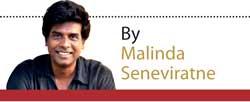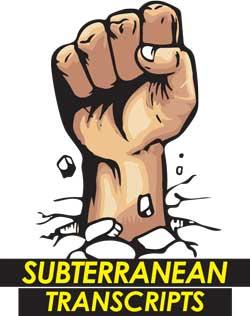06 Aug 2020 - {{hitsCtrl.values.hits}}
 Sri Lanka: A nation, a constitution, a state and a distinct landmass. Sri Lankan: the term could refer to a citizen or an expatriate; to people, places and things associated with Sri Lanka. Srilankanness: it’s hardly ever been used and indeed there’s no agreed-upon way to write the term. It has connotations of culture and sensibility which are after all intangible and difficult to quantify, categorise or define in an airtight manner.
Sri Lanka: A nation, a constitution, a state and a distinct landmass. Sri Lankan: the term could refer to a citizen or an expatriate; to people, places and things associated with Sri Lanka. Srilankanness: it’s hardly ever been used and indeed there’s no agreed-upon way to write the term. It has connotations of culture and sensibility which are after all intangible and difficult to quantify, categorise or define in an airtight manner.
Part of the problem is the name. ‘Ceylon’ was a corruption of a local name, Sinhale, which had little to do with lion (sinha) or blood (le) as some believe, but was derived from ‘Sivhela’ or the ‘Four Helas’ (Yaksha, Rakshan, Naga and Deva), a collective which affirmed the ideas of inclusiveness and belonging.
Part of the problem is the name. ‘Ceylon’ was a corruption of a local name, Sinhale, which had little to do with lion (sinha) or blood (le) as some believe, but was derived from ‘Sivhela’ or the ‘Four Helas’ (Yaksha, Rakshan, Naga and Deva), a collective which affirmed the ideas of inclusiveness and belonging
 Inclusivity and belonging, it could be argued, was and is a central cultural and philosophical tenet among the people who inhabit this island. There are, for example, thousands of Tamil words that have become part of the Sinhala language. Admittedly that’s just a tiny fraction of the entire vocabulary, but that doesn’t take away the readiness to embrace. There are numerous examples outside of language, but this is not the place for explication along such lines.
Inclusivity and belonging, it could be argued, was and is a central cultural and philosophical tenet among the people who inhabit this island. There are, for example, thousands of Tamil words that have become part of the Sinhala language. Admittedly that’s just a tiny fraction of the entire vocabulary, but that doesn’t take away the readiness to embrace. There are numerous examples outside of language, but this is not the place for explication along such lines.
Anyway, it boils down to identity. We’ve had that discussion for decades now; the one about ‘a national identity’ which, literally, would refer to something that encompasses one and all and where one and all find meaning in.
Perhaps this is why leaders of that time decided to ditch ‘Sinhale’ (because it sounded like ‘Sinhala’?). Perhaps they were persuaded by the ‘multi ethnic’ and ‘multi religious’ nature of the polity (yeah, never mind the numbers and percentages!). Perhaps this is why colours associated with ethnic communities were stitched into the national flag. Perhaps this is why lip service to a ‘special place for Buddhism’ (Article 9 of the Constitution) was effectively negated by Articles 10 and 14.
How does any of this help forge ‘Srilankanness’ of a kind envisaged by secularists, liberals and advocates of birth certificate revision? Indeed, we could argue that there is Srilankanness in accommodating all of this. That’s an embrace of a kind that is hardly seen in the world
Perhaps the intention was noble in the main, although one cannot dismiss the possibility of the Chelvanayakam Principle (a little now, more later) at work. That principle, for the record, is not the preserve of the Tamil Nationalists.
Communities within the larger nation didn’t disappear despite all these machinations. Not surprising since identity is fundamentally not reducible to flag, anthem, identity card and birth certificate. You can’t really insist ‘Sri Lanka’ in all these things and expect Sinhala, Tamil, Muslim, etc., to disappear. You can’t slice communities and mix them up in place or flag and get ‘a larger nation’ where the constituent parts become meaningless. Also, if any community perceives that it has been short-handed or creates a short-handed narrative or inflates the grievance, then such community identities will naturally become more pronounced. If a particular community, in the interest of asserting self-identity chooses deliberately to dress differently, then for that community at least the relevant identity is more important than a ‘national identity.’
On the other hand, if the state insists on ‘larger nation’ in one instance and at the same time pushes people to affirm communal identities, we have a problem. We either go with the reality of a Sri Lanka in which many religious and ethnic communities exist and acknowledge relevant numbers and percentages as well as heritage-claims (in terms that can be substantiated) or we work relentlessly towards a larger identity that gradually makes irrelevant ethnic and religious identities. Obviously this is easier said than done. Moreover, it would be hard for a person from any community to willingly disavow his/her religious and ethnic heritage and their traces in cultural and other life practices including meaning-generating force just to be a ‘national’ so to speak.
It was announced recently that ‘race’ would be erased from the birth certificate. Those born and have births registered in Sri Lanka would no longer be ‘Sinhala,’ ‘Tamil,’ ‘Moor’ or ‘Burgher.’ They would simply be Sri Lankan. Symbolic, that. Not necessarily bad.
The problem is the ad hoc nature of this move. Let’s say this is a positive thing. Fine. If this is how it is going to be, why have individual communities represented in the national flag? Why have religion-based certification for food (e.g. Halal)? Why have schools that are governed by religious institutions and/or are limited to children of particular faiths? Why have banking institutions that draw exclusively from texts of a particular religion? Why have political parties based on ethnic or religious identity? Why have religious holidays? Why have community-specific laws (e.g. Thesavalamai) or special provisions for particular religions when it comes to marriage and divorce (Muslim Marriage and Divorce Act)?
It is all fishy, really. Secularists seem to be hell-bent (!) on eliminating ‘Sinhala’ and ‘Buddhist’ from the Constitution. Liberals talk of ‘multi-ethnic’ and ‘multi-religious’ but are loath to trot out the relevant numbers. Take away the ‘ethnic line’ in the birth certificate and all of a sudden everyone is ‘Sri Lankan’ which is nice of course, except that we will still have the MMDA, the Thesavalamai law, religious holidays whose numbers do not correspond to percentages of the particular communities in the population. There are 13 for Buddhists, 3 for Hindus and 54 for Christians. Muslims have three official holidays, Idul Fitr, Idul Adha and Milad-un-Nabi. In addition they are given two hours of leave from 1 pm every Friday. That’s the equivalent of 13 work days if you want to be mathematically clinical about such things. During the Ramadan period, Muslims have the privilege of obtaining ‘special leave’ to take part in prayers. A Muslim woman is given four months and ten days leave in the event her husband dies and three months following divorce. Feel free to do the math and frame it all in ‘religious composition.’
How does any of this help forge ‘Srilankanness’ of a kind envisaged by secularists, liberals and advocates of birth certificate revision? Indeed, we could argue that there is Srilankanness in accommodating all of this. That’s an embrace of a kind that is hardly seen in the world. However, if in such a ‘Sri Lanka’ and within the relevant ‘Srilankanness’ there is nothing ‘Sinhala’ or ‘Buddhist’ but there is very prominently ‘Tamil,’ ‘Muslim,’ ‘Christian’ etc., we get something grotesque. Anything that disavows the majority community does not produce ‘nation’ but instead creates an aberration; a deformity that could ultimately scuttle the entire process of forging a national identity.
Insofar as ‘nation’ does not reside and cannot by held in a flag, anthem, certificate or an article in a constitution, a oneness, a Srilankanness if you will, undefined and resisting encryption in law, will exist and be transformed organically as is the way of human collectives. Despite good/bad intention affirmed in law and machinations such as certificate revision. However, nations-building that is fixated on things such as flags, anthems and certificates can and are likely to divide people, and create and exacerbate tensions among them.
Sri Lanka, Sri Lankan and Srilankenness are things that can be wrought in many ways. Such things can have meaning and have durability when the process is organic. When it’s just a tinkering exercise, it corrodes.
[email protected].
www.malindawords.blogspot.com.
24 Oct 2024 20 minute ago
24 Oct 2024 31 minute ago
24 Oct 2024 1 hours ago
24 Oct 2024 2 hours ago
24 Oct 2024 4 hours ago